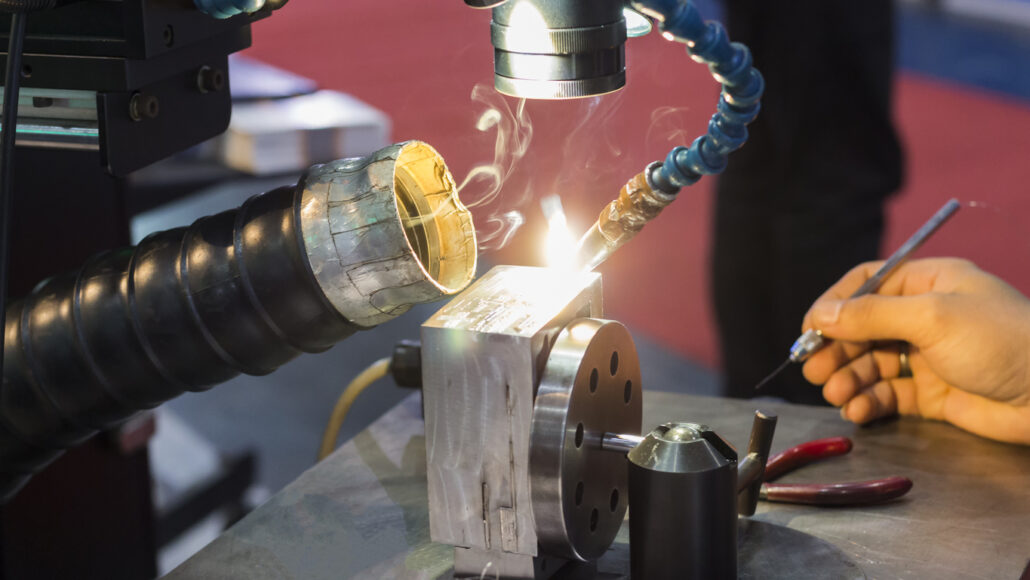Laser cladding technology belongs to the additive manufacturing technology of metal and its composites, and is an important supporting technology of laser strengthening manufacturing, laser remanufacturing and laser 3D manufacturing technology. In addition, laser cladding technology is an additive manufacturing technology that can meet the requirements of the integration of forming and forming. It can take into account the accuracy and high performance. It integrates many modern advanced technologies such as laser technology, computer technology, numerical control technology and material technology, and has gradually developed into an advanced technology that can realize intelligent manufacturing. In addition, laser cladding can solve the problem that traditional manufacturing methods can not complete, and it is a high and new technology supported and promoted by the state.

Compared with many traditional surface treatment technologies, laser cladding technology has the following significant advantages and characteristics:
- Laser cladding can produce a small heat-affected zone on the substrate, and the workpiece deformation is small.
- Metallurgical bonding can be achieved between the cladding layer and the base material, and the dilution ratio of the cladding material is low.
- The cladding layer has fine grains and compact structure, and can obtain high hardness, wear resistance, corrosion resistance and other properties.
- Selective partial and fine repair can be achieved to reduce the repair cost.
- The adaptability of the powder material system is relatively high. Most conventional and special metal powder materials can be coated on the surface of metal parts.
- High-performance cladding layer can be selectively prepared on the cheap and easy-to-process substrate surface, and the composition and performance of the cladding layer are rarely diluted by the composition of the substrate material.
- The cooling rate is as high as 10 ± 6 ℃/S, and the obtained cladding layer has finer grain structure, denser structure, higher hardness, better wear resistance and corrosion resistance.
- The laser processing is flexible and convenient for processing the parts (grooves, inner hole walls, etc.) that are difficult to be processed by conventional methods. The motion accuracy is controllable and it is convenient to process the contour surface with complex shape. It can realize the precise cladding repair of selected areas, and the subsequent processing is less.
- The thickness and shape of the cladding layer can be accurately controlled according to the working conditions and combined with the base material metallurgy.
- The process can be controlled, easy to realize automation, no pollution to the environment, low noise, and comfortable working conditions.
- It provides a new way for the remanufacturing of waste parts to extend their service life.
After decades of development, laser cladding technology has entered into practical industrial applications from the laboratory, and has been widely used in aerospace, petroleum, shipbuilding, engineering machinery, nuclear power and other industries. The application of laser cladding repair involves metallurgy, electric power, petroleum, chemical industry, shipbuilding, locomotive, coal machinery, automobile and other pillar industries of the national economy. According to the operating conditions of different equipment, laser surface remanufacturing (cladding repair, additive manufacturing) mainly improves the wear resistance, corrosion resistance, high temperature resistance, oxidation resistance and other properties of metal parts, which can not only restore the use of the failed parts, but also significantly prolong the service life of new parts.
With the rapid development of science , technology and industry, the technical requirements for laser cladding will also be higher and higher. Therefore, the future development direction of laser cladding mainly includes the following aspects.
First, multidisciplinary and interdisciplinary development. At present, laser cladding technology is mostly used in the direction of material science and engineering. As a typical high-end manufacturing technology, its application research combined with engineering objects is relatively weak. In the future, laser cladding, as an interdisciplinary technology of material science, optical engineering and control engineering, will expand its research from the material field to the manufacturing field, requiring comprehensive development of various disciplines.
Second, systematic and integrated development. Due to the technical bottleneck of laser cladding manufacturing, the size and shape accuracy of metal parts formed by laser cladding cannot meet the requirements of precision forming. Integrating laser cladding technology with robotics and precision cutting, and building a large research system will promote the laser cladding technology and its industrialization.
Third, large area cladding and quality control. Combined with the development of high-power laser and the design of laser optical system, the process problems of large-area cladding that cannot be overcome at this stage are solved, and the quality and manufacturing efficiency of laser cladding layer are further improved.
Fourth, miniaturization and in situ repair. In view of more and more requirements for in situ repair, lasers will develop towards high power, miniaturization and portability in the future, and laser cladding technology will also increasingly emphasize in situ repair technology.
About HGSTAR: HGSTAR is is a sub-brand of HGTECH.HGTECH the pioneer and leader of laser industrial application in China, and the authoritative provider of global laser processing solutions. We have comprehensively arranged laser intelligent machine, measurement and automation production lines, and smart factory construction to provide overall solutions for intelligent manufacturing.

